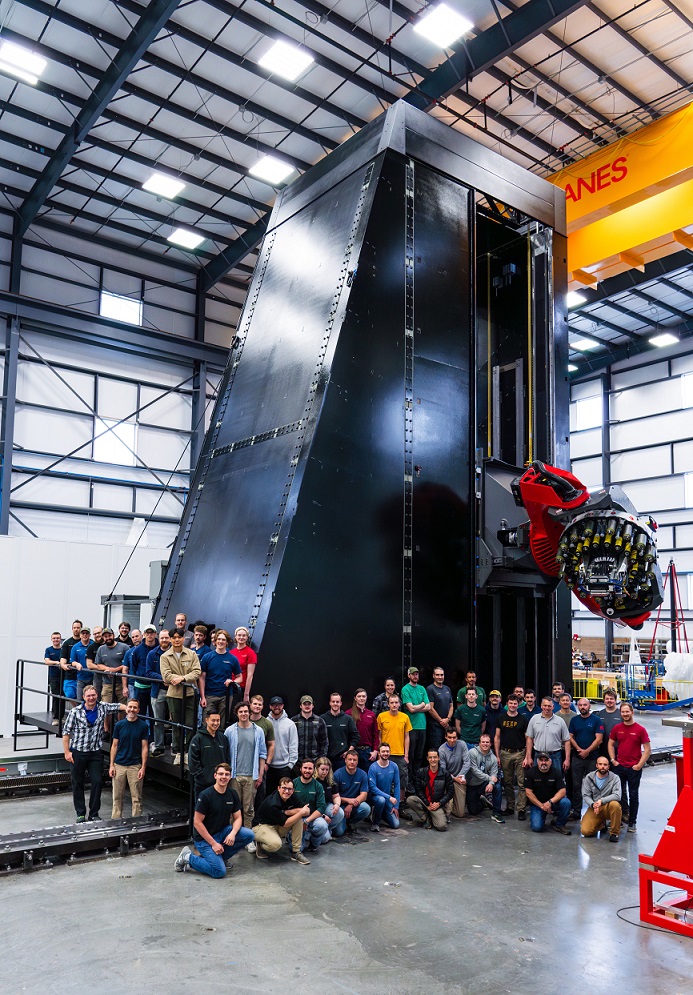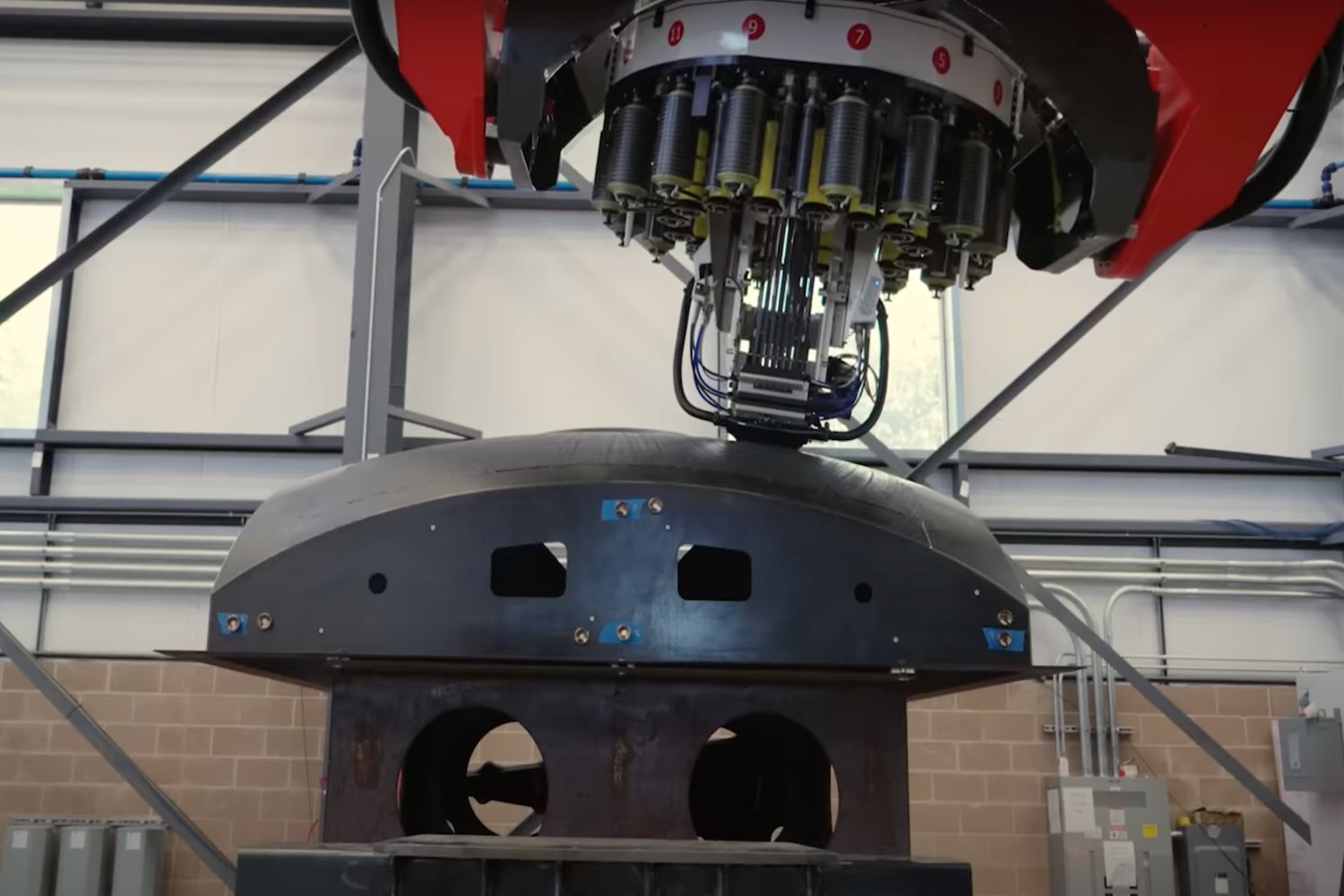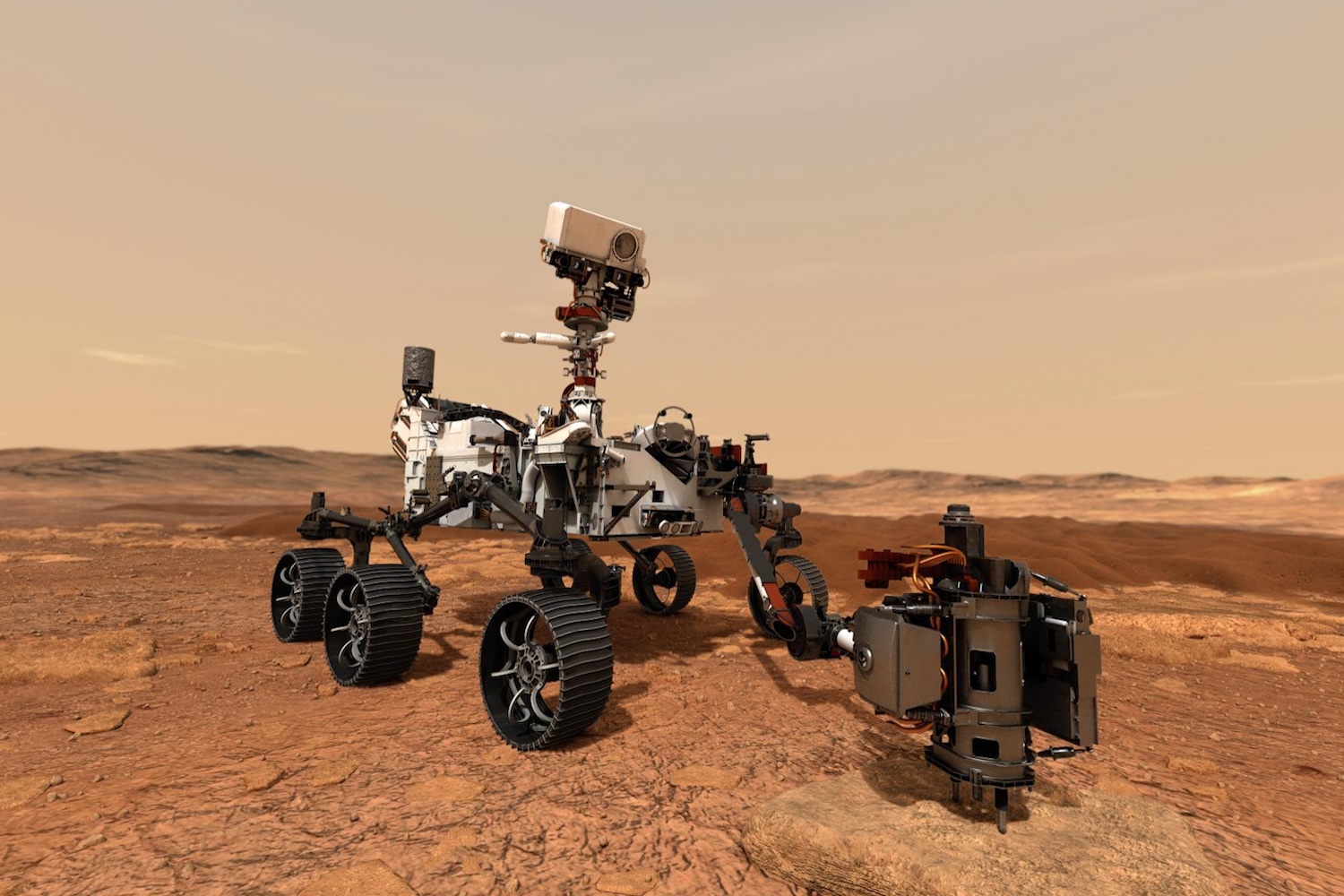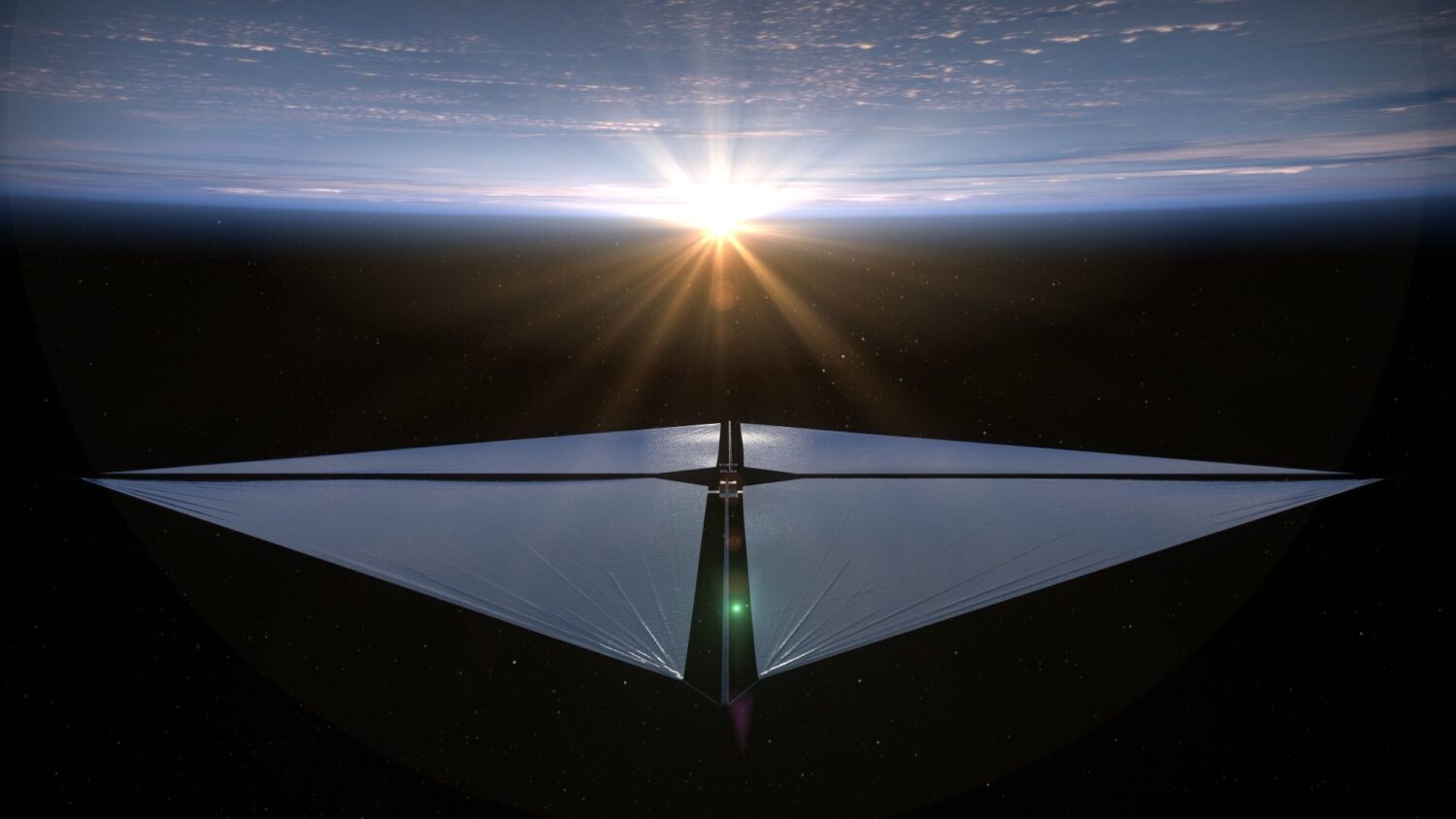At Rocket Lab’s manufacturing complex in Maryland, a massive robot is hard at work stacking layers of a carbon composite rocket at a rate that will save the company thousands of hours in production.
The custom-built 3D printing machine weighs 99 tons and stands tall at 39 feet (12 meters), the biggest of its kind in the world. As the largest automated fiber placement (AFP) machine, it is tasked with building the biggest structures of the company’s upcoming Neutron rocket, including the domes and barrels that make up the upper stage and the panels that enclose the 91-foot (28-meters) interstage and fairing stage.
“As we build the world’s largest carbon composite rocket, it makes sense that we require a world-first carbon composite fiber placement machine,” Rocket Lab founder and CEO Peter Beck said in a statement.

Neutron is a medium-lift, two-stage launch vehicle that’s currently under development, with plans for a debut flight in 2025. The rocket is designed to deliver 28,700 pounds (13,000 kilograms) to low Earth orbit, and has a reusable first stage meant to reenter through Earth’s atmosphere and land back on its launchpad.
Rocket Lab’s reusable rocket is made from carbon composite material, made by combining two or more materials together. By using the 3D printer to build Neutron, Rocket Lab aims to massively accelerate the laying down of carbon onto a mold as the machine can move up to 98 feet (30 meters) and lay down continuous carbon fiber composite at a rate of 328 feet (100 meters) per minute.
The AFP machine is currently at work at Rocket Lab’s Space Structures Complex in Middle River, Maryland, building the rocket’s 22.9-foot-wide (7 meters) first stage, and its 16.4-foot-wide (5 meters) second stage tank. Rocket Lab estimates that it will save more than 15,000 hours of manufacturing from the entire production process because of its giant robot, which takes a single day to lay the same amount of layers of carbon that would have otherwise taken weeks to be done manually.
Rocket Lab’s 3D printer also comes with a real-time inspection system that’s on the lookout for any manufacturing defects during the process and notifies the machine operator before it moves on to the next layer of carbon.
“It’s an innovative machine producing a next-generation rocket from one of the birthplaces of the aerospace industry in Baltimore, and we can’t wait to see its first carbon composite printed panels come off the production line soon,” Beck said.
The giant robot won’t just be used to manufacture Neutron; Rocket Lab also intends on using the machine to print the first stages of its Electron rocket, as well as other spacecraft components such as structural panels and assemblies, solar panel substrates, and carbon composite tanks.
The rise of 3D printing in the space industry is meant to make way for more cost-effective ways to reach orbit, and increase the chances of reusability of launch vehicles. Last year, Relativity Space attempted to launch Terran-1, a 3D-printed, methane fueled rocket that was meant to break grounds with its first flight, but it didn’t reach full thrust. Rocket Lab also built the world’s first 3D printed rocket engine, the Rutherford engine, which powers its Electron launch vehicle.
The company is slowly making its way towards the reusability of its rockets, hoping to compete with industry giant SpaceX. It might not be there yet, but Rocket Lab is definitely in the running.














